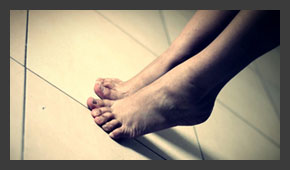We spend so much of our lives on our feet, whether it is at work or during our favorite hobbies or activities. After a while, it can take a toll on our bodies, specifically the legs and feet. This leads many people to go through even more discomfort, especially if they have flat feet or high arch feet. While these two conditions are common, they can be extremely difficult to deal with.
The most common foot type is a mild flatfoot. Flat feet occur when there is not enough arch in the foot which provides very little support, and can increase with more exposure to weight-bearing activities. It occurs from multiple reasons including genetics, injuries, tendon problems, shoe gear, and systemic diseases such as rheumatoid arthritis or diabetes.
When a patient with a flatfoot stands, the rearfoot can tend to roll in and if severe, the ankle, knee, and hip can also start to rotate inward. In some cases, this type of foot can result in bunions, hammertoes, Achilles tendinitis, inside ankle pain, arch pain, and plantar fasciitis. If you have any of these problems, they can typically be addressed by a supportive orthotic, which is a removable arch support that fits into your shoes.
High-arched feet, also known as "cavus feet", is a condition where the foot's arches are unnaturally high and put extra pressure on the ball and heel of the foot when walking or standing. The high arched foot tends to roll outwards, which can lead to foot instability and the increased risk of ankle sprains and other conditions.
Athletes with high arches should pay extra attention to their lower limbs with this foot structure because it is not the best for absorbing shock, as a raised midfoot can be more prone to overuse injuries. This type of foot can result in neuromuscular diseases, hammertoes, painful calluses, ball of foot pain, and recurrent ankle sprains. An orthotic can be used to cushion and reduce the pressure on the outside of the ankle to prevent further ankle sprains.
If you have a condition that is causing you concern, make an appointment with your podiatrist to check your gait and get a diagnosis of your condition and its underlying causes. They can assess any arch issues you may be dealing with and try to cushion your arch with either support or absorption of shock, in order to reach optimum performance.
Written by
Dr. Jeffrey S. Hurless
DPM, FACFAS Board Certified Foot & Ankle Surgeon/Podiatrist
Medical Director, HealthyFeetStore.com
Flat Feet vs. High Arch


